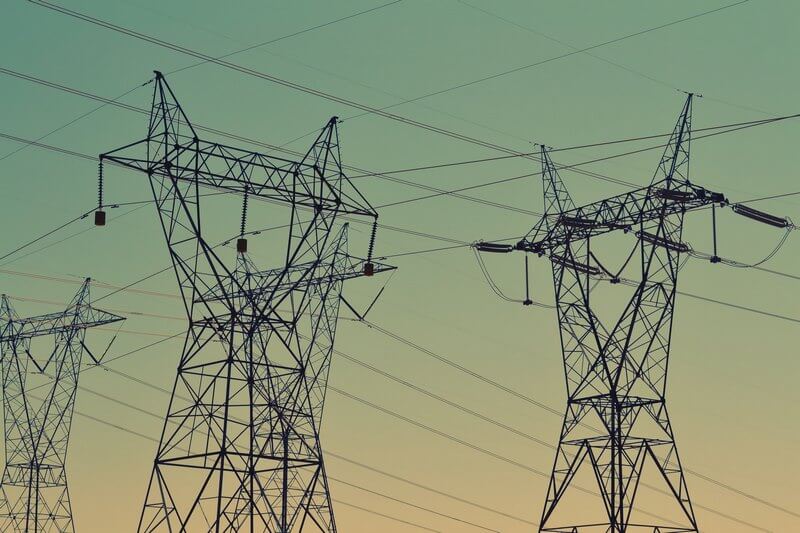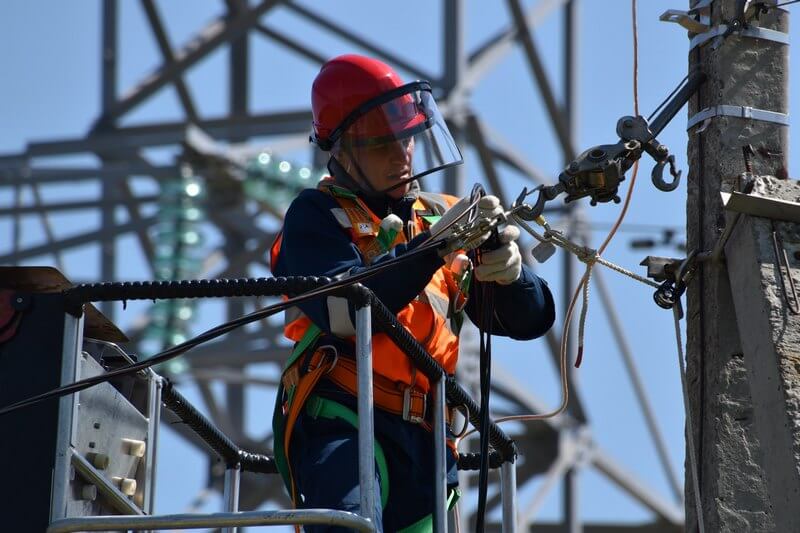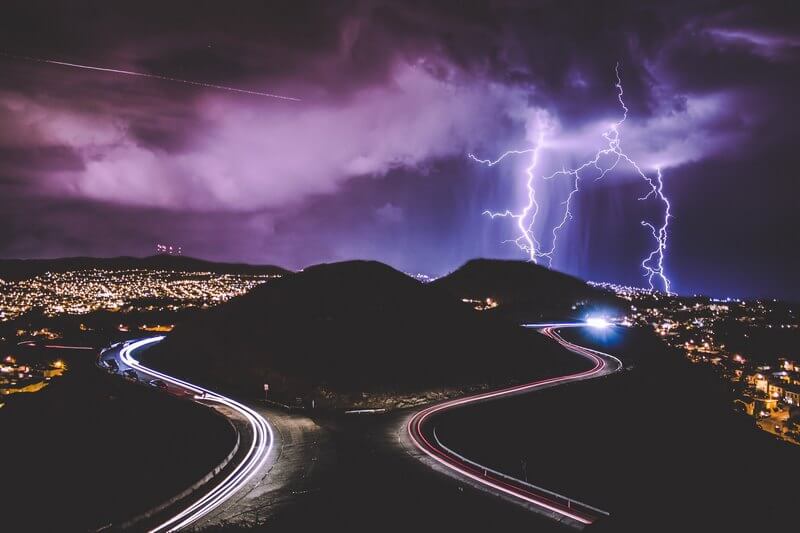
Summer 2022 power outage risk increase
As we move into Summer 2022, industry experts are telling us to prepare for power outage risk. In the US, we’ve experienced the impact of a statewide outage in Washington state, winter storm Uri in Texas (2021), the Colonial Pipeline cyber attack, and the devastating Dixie Fire in California (2021). NOAA’s Climate Predication Center forecasts above-average temperatures during the season.
The North American Electric Reliability Corporation (NERC) announced in its Summer Reliability Assessment that extreme temperatures and ongoing drought could cause the power grid to buckle. Overall, the concern is that power demand will outstrip available supply.

Know your terms, know your risks
As resilience professionals, it is also helpful to understand the language of power outages. Here are a few of the high-level terms it’s beneficial to know as you plan:
- Brownouts – Temporary and often sudden voltage drops, lasting for minutes or hours. Lights typically dim or flicker on and off. This can cause malfunctions or cause permanent damage to electrical mechanisms. They are usually caused by severe weather or overtaxed power grids.
- Blackout – An event that causes the power to turn off completely.
In a 2021 blog, Future Business Continuity Is Customer-Centric, I shared my belief that power outage is an increased risk for many business operations. I acknowledged that we all want high availability and continuous data protection to keep vital systems and apps fully operational during times of crisis. However, power and network are increased risk areas to operations in today’s new normal.

Increased use of rolling blackouts
Throughout Summer 2022, power outage risk may include manmade incidents called rolling blackouts. Since 2019, the state of California has employed Public Safety Power Shutoff (PSPS) to thwart wildfire risks in the state. Although code enabled this technique in 2012, the San Diego, CA’s utility began the ramp-up of PSPS to limit potential damage from the Santa Ana winds.
Currently, six electric utilities provide power in California. Although impactful, the state authorities employ the action to limit the loss of life and damage to citizens. As California recently declared that wildfire season is an ongoing concern, we will likely see increased PSPS there, which could spread to other states. Washington State employed the option in 2021 in response to the unprecedented heatwave. So, it’s essential to recognize that infrastructure failures are not the only root cause of power outages but are mitigation tools.
In addition, when trees sag on powerlines, causing them to overheat, this tree strike initiated the 2003 blackout across the northeast and Canada. That event left 50 million people without power for two to four days, causing $4-10 billion in economic damages. Events like this precipitated the energy industry to utilize controls like PSPS. Governments and utilities may frequently pull the lever of PSPS in the coming years. The mitigation technique will be used until the needed infrastructure is upgraded.

Power grid troubles
The US power grid is considered frail. During the Summer of 2022, power outage risk is mitigated by thoughtful planning, including an understanding of downtime and outage tolerances. It is unlikely that Businesses will realize full operational recovery from this interruption in all cases. Nor is the concern new. In 2016, the House of Representatives Transportation and Infrastructure Committee heard testimony on Blackout! Are We Prepared to Manage the Aftermath of a Cyberattack or Other Failure of the Electrical Grid? The committee sought to understand the risks, vulnerabilities, and consequences of a prolonged, widespread power outage. The opinion was that the country could withstand a week or two, but a longer-term outage could devastate survivability and critical infrastructure.
In 2018, The President’s National Infrastructure Advisory Council (NIAC) gathered to address the issue of surviving a catastrophic power outage. NIAC members conduct in-depth studies on physical and cyber risks to critical infrastructure and recommend solutions that reduce risks and improve security and resilience. Recent reports indicate power grid vulnerability continues as a significant concern. Regulators warn that outages in California and Texas will likely be widespread this summer. H. R. 4939, the Grid Security Research and Development Act, introduced in 2021, is stalled in a subcommittee process. The hard reality is that alternative fuel sources cannot meet the demand or take up the slack. Additionally, conversation issues only get us so far.

Cyber attack risk and top mitigation strategies
All of us are familiar with the ever-increasing risk of cyber attacks. You are likely aware of the risk of cyber incidents to the fragile power grid. However, it’s recently come to light that a portion of the risk is due to the early retirement of fossil fuel plants. Protect Our Power, an independent organization focused on grid resilience, recommends prioritizing these four remediation actions:
- Continue funding cybersecurity and grid resilience
- Establish a consensus-driven national testing structure for grid hardware and software
- Establish a Best Practices data bank for timely information sharing to increase the effectiveness of repelling or mitigating threats
- Expand secure communications systems for mission-critical power system operations for threats, including cyberattacks and EMP events
They believe that achieving these goals will improve grid resilience. Interestingly, the grid experiences unsuccessful attacks daily. And we all know that it will only take one success to jumpstart a significant crisis.

How to achieve a resilience posture
Plan and prepare now. There are a few things we can do from a business resilience perspective.
- Assess generator(s) status and alternative power capabilities (solar, etc.)
- Test and exercise recovery strategies, workarounds
- Gain a clear understanding of gaps and challenges, then work to mitigate them
- Prepare existing facilities and refresh resilience planning (BC, DR, CM, etc.)
- Test and consider redundant communication systems and support (satellite phones, old-school call trees, mobile hotspots, chargers, etc.)
- Confirm that your technology teams backs-up necessary data
- Test and exercise the worst-case scenario
Additionally, we can encourage employees to plan on an individual level. National Standby Repair, Inc. recommends people prepare for brownouts and other outages by:
- Use flashlights or battery-powered LEDs, not candles. I still like hurricane lamps, but you need to be careful of the flame risk
- Eliminate unnecessary travel. Keep your car(s) tank filled up
- Keep fridge/freezer doors closed as much as possible.
- Turn off/unplug all unnecessary electrical equipment
- Turn off/unplug all appliances
- Leave one light turned on (so you know when the power comes back on)
- Have an emergency radio on-hand
- Have chargers, mobile hotspots, or MiFis available to extend internet availability, if available
We can somewhat mitigate the impacts by planning and educating our workforce on this likely risk. The reality is that long-term outages will challenge most of us, who are highly reliant on technology to power business operations. The first goal is for your workforce and operations to survive long-term. The second is to ensure the organization can bounce back quickly.
Let me know your thoughts and any additional suggestions in the comments below.
